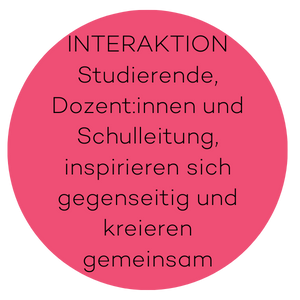
Our Values for Teaching and Everyday School Life
Cooperation in the school
Our course and in particular our curricula encourage and require cooperation between all parties involved (students, lecturers, school management). We believe that cooperation between people with different levels of knowledge (lecturers/students), different fields of knowledge and different roles is enriching and has a multiplicative effect on all involved.
Transparency for successful cooperation within the course
We are transparent because we believe….
- that transparency fosters trust and clarity among all parties involved:, students, teachers and school management.
- that transparency creates an atmosphere for learning and creativity.
- that transparency calls on all participants to be accurate and authentic.
The schools transparency towards the public
We are committed to transparency
- between the school and the public.
between the school management and the employers.
between the school/school management and the authorities.
we are committed to transparency
- between the school and the public.
- between the school and the authorities.
- between the school management and the employers.
The Faculty
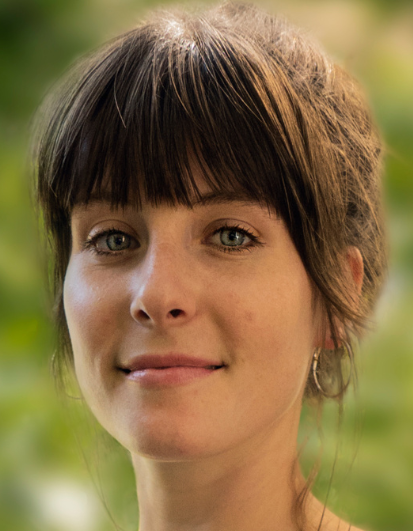
Janka Kormos
PhD Candidate - Psychology Doctoral School, University of Pecs
Certified KMP Movement Analyst & Trainer Registered Dance-Movement Therapy, MA (FVB-NVAT)
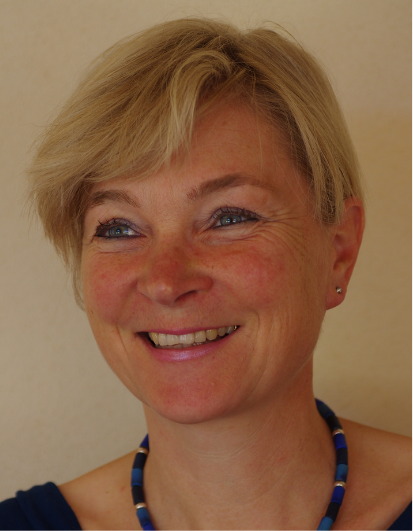
Katrin Brandner
Supervisor, Coach and Social Therapist
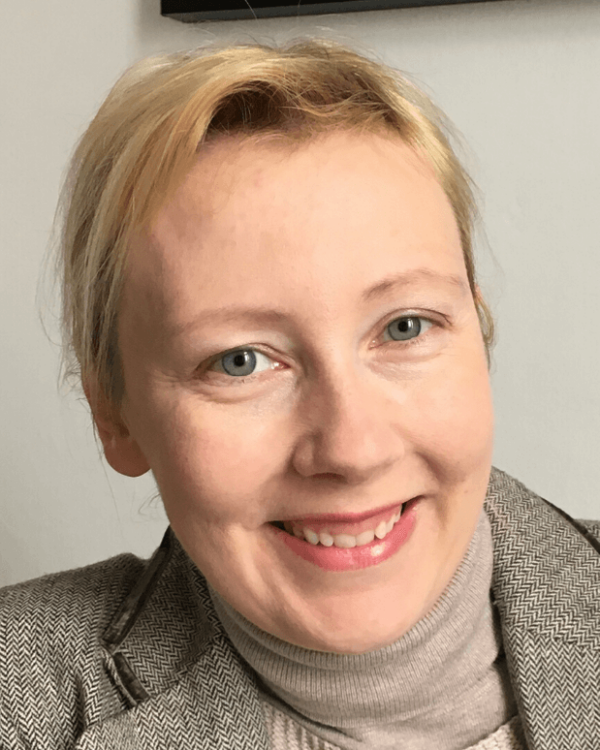
Michaela Noseck-Licul
Mag. Dr. phil. Cultural Anthropologist / Medical Anthropologist, Lecturer for ethics in health professions
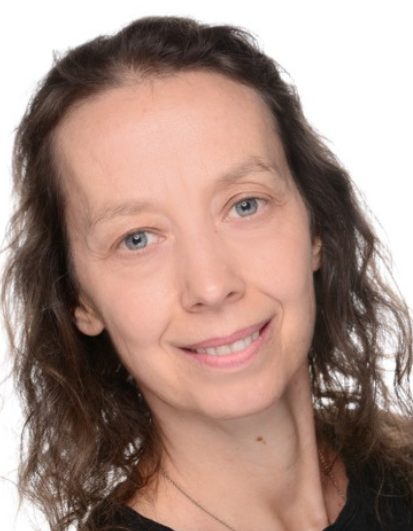
Katja Borsdorf
Dance Pedagogue
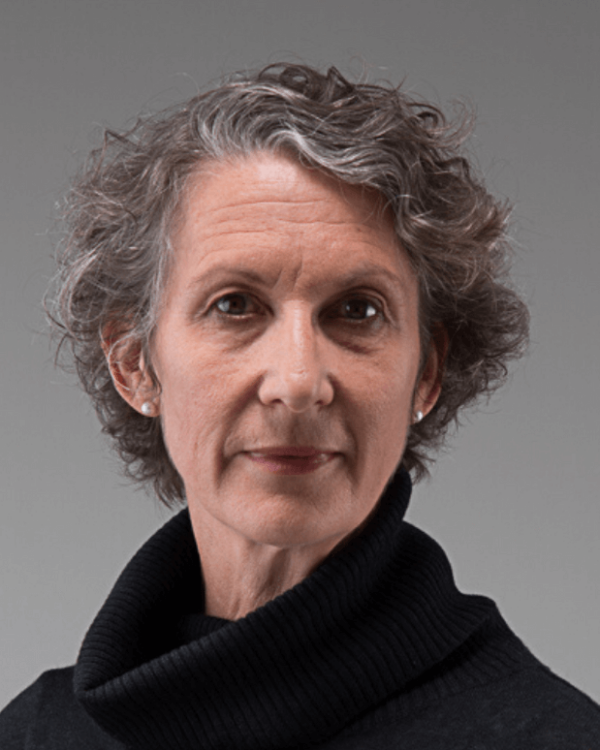
Tina Mantel
Prof. ZFH Choreographer, Dancer, MA in Dance Science, Dance Pedagogue, Coach
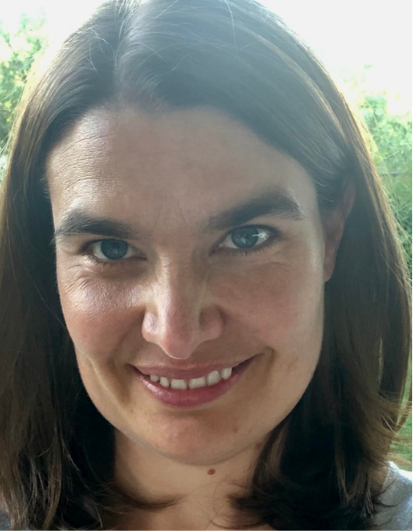
Ariane Konrad
Philosopher M.A., Dance Movement Therapist DGT
Trauma Therapist NARM® Practitioner
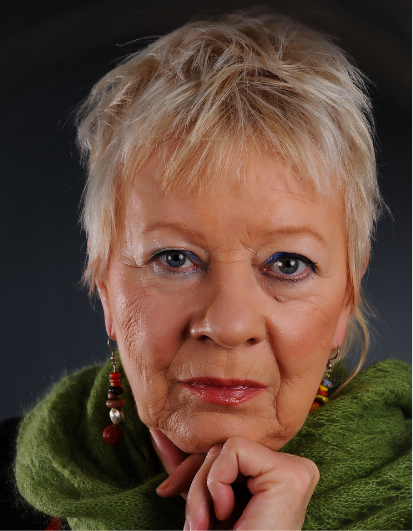
Esther Böhlcke
Gestalt Sociotherapist, Movement Pedagogue Laura Sheleen
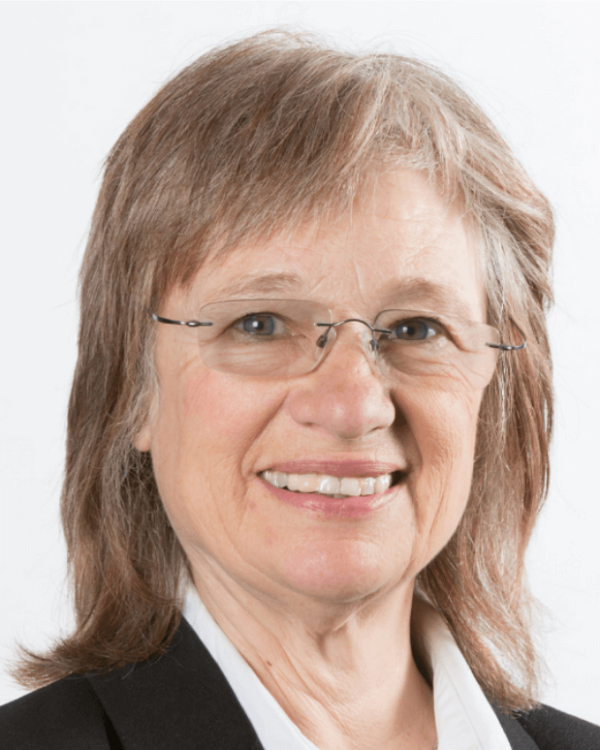
Helen Payne
Professor of Psychotherapy, Dance/movement therapist (BC-DMT), Somatic Psychologist (PhD), Licensed Professional Counselor (LPC), Approved Clinical Supervisor (ACS)
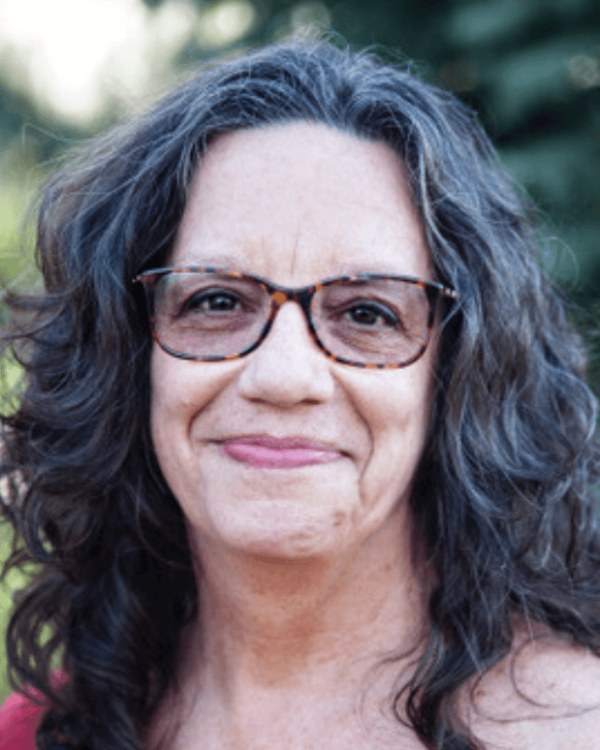
Christine Caldwell
PhD, Somatic Psychology. Professor
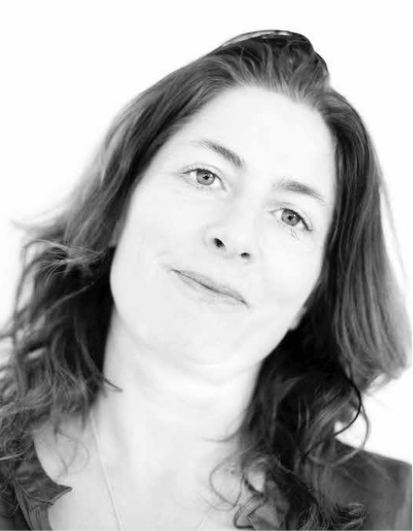
Katharina Conradi
BA Dance/Choreography, MA Dancetherapy, CMA Certified Movement Analist, RSME/T Registered Somatic Movement Educator/Therapist (ISMETA), member NVDAT Danstherapie Nederland
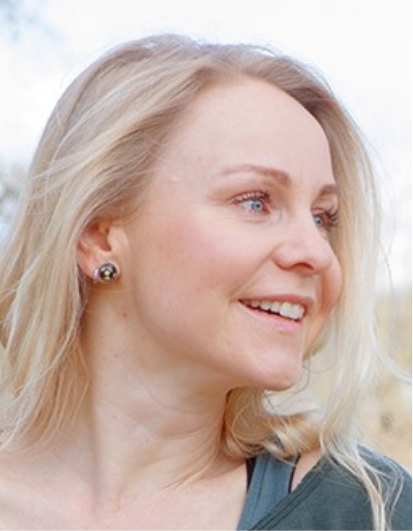
Marieke Delonnay
Certified Laban Movement Analyst, accredited Dance and Movement Therapist, and accredited Somatic Movement Practitioner
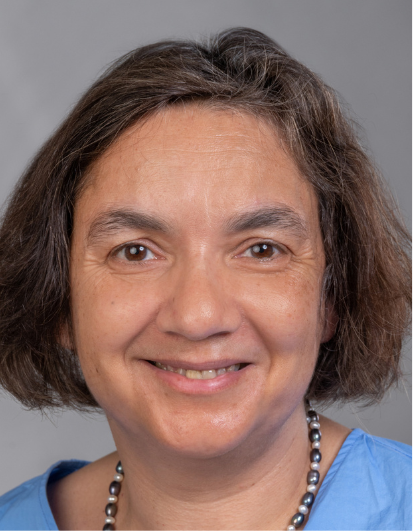
Puspa Agarwalla
Dr. Phil. Clinical psychologist and psychotherapist
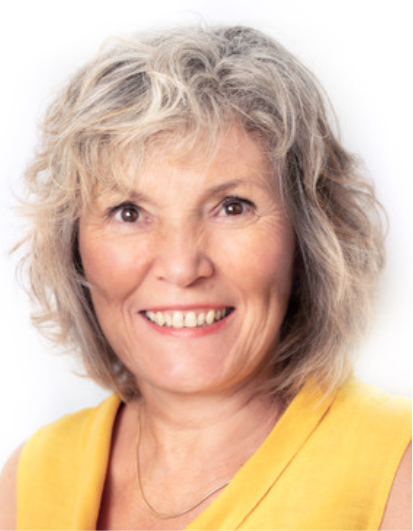
Dipl.Psych. Birgit Milz
Federally recognized psychotherapist
Course in Dance / Movement Therapy (Ute Lang/Kedzie Penfield,Berlin)
Diploma in Analytical Psychology C.G.Jung Institute Zurich
EMDR Supervisor (EMDR Europe)
Various further trainings in psychotraumatology, attachment theory and dissociative disorders
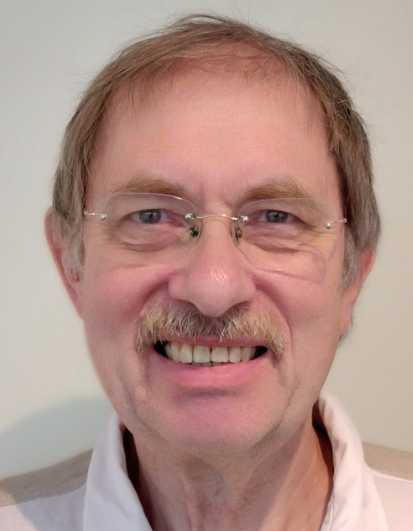
Konstantin Beier
Prof Dr Anatomist and cell biologist
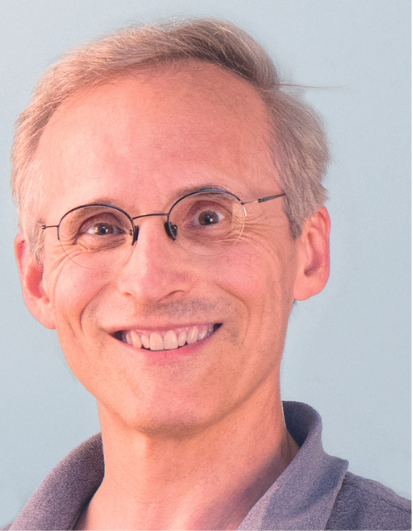
Stefan Glättli
Dr. med. General Internal Medicine FMH, General Practitioner
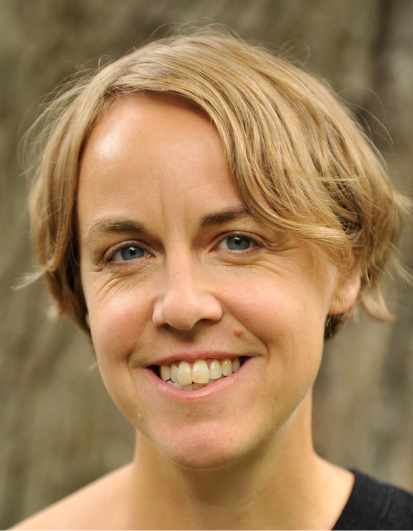
Rebecca Barnstaple
Assistant Professor Creative Arts, Health and Wellness/Theatre
Research Associate International Institute for Critical Studies in Improvisation
University of Guelph, Ontario, Canada
PhD Dance Studies, Neuroscience Graduate Program
York University, Toronto
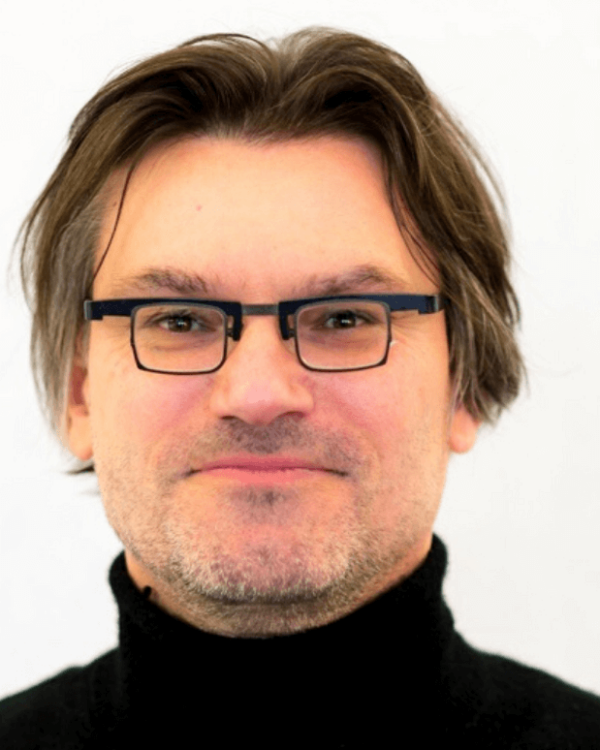
Michael Gerfin
Prof. Dr., Professor for Economics, University of Bern
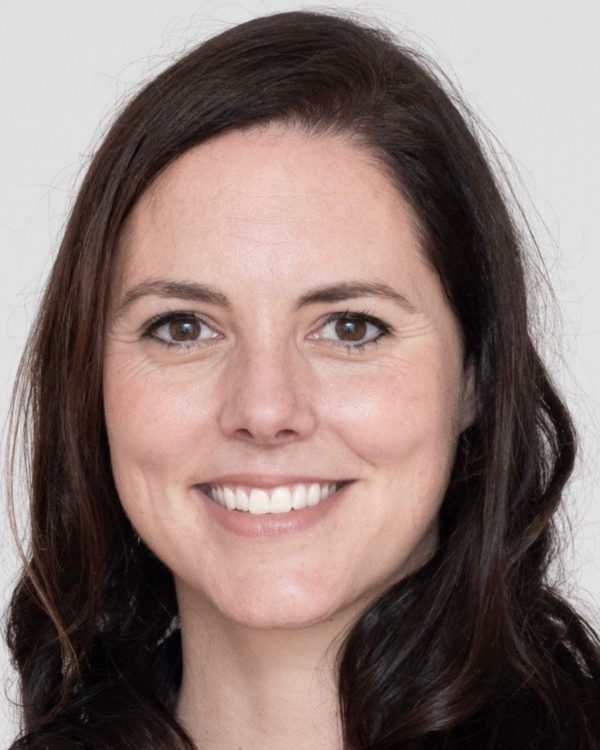
Anina Kuoni
Dr. iur., specialist lawyer SAV labour law
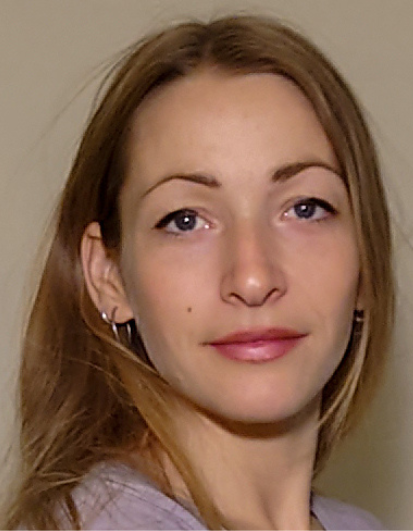
Kaya Eng
Master of Arts in Mediation of Art and Design with teaching diploma, FHNW HGK, Basel, FHNW PH, Muttenz

Brigitte Züger
Head of School, Dance Movement Therapist, Swiss Dioloma Kunsttherapie/Dance Movement Therapy

School Management
Brigitte Züger
Integr. and clin. Dance Movement Therapist, Body Therapist FPI , Arts Therapist Movement and Dance Therapy (ED), Dance Movement Psychotherapist
Born in Basel in 1960, I went through 12 years of school there. Due to my experience as a movement teacher and dancer, I experienced that movement and dance also have far-reaching effects on the psyche. This led me to dance therapy. Since 1994 I have been an Integrative Dance and Movement Therapist, since 1012 a Dance Movement Psychotherapist. In 2014 I passed the Federal Higher Examination for Complementary Therapy, in 2016 the Federal Higher Examination for Art Therapy Movement and Dance Therapy.
My path led me in 1994 to Reha Rheinfelden, where I was given the task of setting up a dance therapy department and creating therapy concepts. From 2000 to 2010 I was given the management of the Creative Therapy / Music and Dance Department. During this time the clinic went through the process of quality review. This allowed me to think broadly about the quality control of dance therapy. In this context, I conceptualized the treatment strategies for the different disease groups and systematized the treatment protocol and reporting. In 2012 I left the clinic. In the whole time since 1994 until now I still lead and lead my
private office for Dance Movement Therapy in Basel.
I am married and have 4 adult patchwork children
Vitae Brigitte Züger
Newsletter
Here you can find our newsletters. They come irregularly due to our other tasks
Aug 21 How a Dance Movement Therapy concept is born
Dear Reader
Here is an example of how I work out dance therapy issues:
As a Dance Movement Therapist I have the challenge to describe my offer “close to the people and their experience” and from the perspective of activating resources. For me this means that I let myself be touched or inspired by a (current) theme. Through reflection and by feeling my way into the theme, ideas and possibilities for the Dance Movement Therapeutic implementation of the theme emerge. I consider whether depth-psychological factors of dance therapy make sense for this, or whether it is more about gaining self-competence. To what extent should the repertoire of movement, which has an expressive effect, be expanded? What kind of relationship would be helpful for the clients and strengthen their self-confidence?
We call this process “concept development”. In ZOE SCHOOL we put a lot of emphasis on this, because only if a dance therapist is able to adapt his/her offer to the topics of the culture, the social topics and currents, his/her work remains current and useful.
That’s exactly what I did recently when I found an article on Languishing. It refers to the long-term effects of covid, that is, long covid. When I read the article, I was not only amazed but really pleased: Finally an article that does not “psychiatrize” or “pathologize” a disturbing element of the psyche, but describes and deals with it in a human-oriented and empathic way. I could do a lot with this from a Dance Movement Therapeutic point of view, because Languishing is largely about withheld emotions, which, from my experience, easily come into flow with movement and movement expression. Which of YOUR personal issues would you like to work on in dance therapy?
Many Greetings Brigitte Züger, director ZOE SCHOOL OF DANCE MOVEMENT THERAPY, Basel
Sept 21 What we offer at ZOE SCHOOL
Dear Reader
We are now in the process of expanding the courses offered under the ZOE SCHOOL umbrella. Thus, we now offer different course formats: the Specialized Continuing Education Courses, the Crash Courses and the Associated Courses for students at ZOE SCHOOL.
Specialized Continuing Education courses are a combination of courses from the curriculum and last approximately 200 to 400 hours. They address people who are already working as dance therapists or educators, psychologists, psychotherapists or other helping professionals who want to integrate dance therapy aspects into their work.
If you want to do the whole course at a later date, we will credit you for part of the courses you have taken in the Specialized Continuing Education. The duration is two years.
The crash courses are short forms of the existing courses in the course and last between 10 and 20 hours. You will gain insight and develop skills from the courses in the course in a short period of time.
Associate courses are courses offered by the Y Harkness Center for Dance Movement Therapy in New York. They are online courses on specific topics such as dance therapy with the elderly or with dementia, dance therapy and social change, dance therapy and neurobiology, a critical review, etc. These courses are available to ZOE SCHOOL students as free electives with an expense fee.
In addition, two info videos on courses or topics in the course have now been created. You can find them here on our website.
If you want to start studying Art Therapy Movement and Dance Therapy with us at ZOE SCHOOL, remember that the entrance exams will only be held on October 9, 21, November 27, 21 and January 15, 22. We need the dossier for admission at least 10 days before these dates. More info and explanation brochure for admission can be found here.
The dates for the information evenings can be found here,
Many Greetings Brigitte Züger, director ZOE SCHOOL OF DANCE MOVEMENT THERAPY, Basel
Oct/Nov 21 Spirituality in Dance Movement Therapy
Dear Reader
I am often asked what place spirituality has in the course of ZOE SCHOOL FOR DANCE MOVEMENT THERPY. This is a very good and also important question. First a statement from me personally: Spirituality is resident as a vibration in each of our cells, so it is deeply rooted in our being. In this newsletter I would like to speak primarily of spiritual attitude and spiritual experience.
From my point of view spirituality does not know any dualization e.g. of body and mind/spirituality: a spiritual attitude overcomes this and knows neither judgements nor condemnations. This spiritual attitude promotes the deep experience and insight into things in themselves or the experiential knowledge of the essence of things. From this flows the experience of “more than what our external senses can grasp.” This awakens intuition and inner wisdom and leads into the absolute presence of all that is.
In the ZOE SCHOOL you learn to observe your movement and subsequently the movement of your clientele as pure movement, to perceive it and to grasp it without judgement or condemnation. As you become familiar with this during the course, you will automatically approach the essence of experience and the “more than what our outer senses can grasp”, which corresponds to a spiritual attitude. We also call this “the therapeutic intuition”.
Here is another way of looking at the connection between dance therapy and spirituality: The body basically knows no duality. It expresses what is, whether pleasant, unpleasant, desired or undesired. “Pleasant”, “unpleasant”, “desired” or “undesired” originates from our dualizing interpretation. With each so-called negative interpretation we increasingly distance ourselves from our (body) experience, split off, create our shadows and dualize, which can lead to physical and psychological disorders.
We dance therapists therefore strive in the therapy process to dissolve this dualization by accompanying our clients on their way into the presentness of the body, of life and experience and thus into their vitality. Doesn’t this sound like a growth process of mystics and sages or of really spiritual people?
To this end, I would like to quote a poem by Marion Woodman from her book, Coming Home to Myself:
“We can swing back and forth
Between opposites indefinitely
Better to stand
On the stillpoint
At the center where all is pure motion, pure live and fulfillment in spirit.”
Both the dance therapist Anna Halprin and all the dance therapists who have developed the Authentic Movement method, also part of our curriculum, for many years, convey to us the depth of experienced movement. They have all encountered spiritual experience along the way and have found that this is the real path of healing.
So, in the course you are going on a journey that puts great emphasis on the spiritual attitude on the basis of academic-oriented knowledge. ZOE SCHOOL is also breaking new and significant ground in this regard.
Many Greetings Brigitte Züger, director ZOE SCHOOL OF DANCE MOVEMENT THERAPY, Basel
May 22 How do Students learn Dance Movement Therapy
How do our students learn?
Why does ZOE SCHOOL focus on experience-based learning?
What is experience-based learning? How does it differ from self-experience?
Dear Reader
In experience-based learning, the learning content in all movement courses is presented to you on a practical, movement-experiencing level. The presentation of the theory usually follows, after which you can compare your own experiences of the experience with the theory through guided self-reflection: What did I experience and what of my experience did I find in the theory? What of the theory was missing from my experience? In the subsequent “doing and experiencing”, the aspects experienced through the theory can then be explored and thus, in turn, be explored and integrated in movement with it. The advantage of this is that the students experience and grasp how it feels when new territory is entered, or when previously unknown things are acquired through moving experience.
Through experiential learning, both your senses and your body open up, you become awake, alive and curious. Your abilities are automatically expanded through curiosity.
There is a second way, it is called “theory-based learning”. For this, a theory is presented, which is compared with the experiences already acquired through self-reflection on one’s own actions or in life. This takes place at ZOE SCHOOL, for example, in the courses “Biography”, “Mental Hygiene” and “Psychology”: the theory invites to find personal examples to the theory and to reflect on the basis of the theory. Questions such as, “how would I look at or act on something now that I know the theory?”, or, “what insights have I gained from the theory to make my reflections and actions easier and more helpful?” are asked for self-reflection.
One study has shown that experience-based learning significantly increases enjoyment. Not only that, but experiential learning increases the capacity for (verbal and nonverbal) empathy and the emotional intelligence of the learning therapist. We must not forget that these are central skills for a (dance) therapist.
Now, what is the difference between self-reflection and self-experience? Self-reflection is self-observation and questioning from a realistic-critical perspective. This questioning extends the self-experience, as it happens in the self-experience, to the self-reflection. Except that self-reflection brings extraordinary learning effects as described in the text above.
Many Greetings Brigitte Züger, director ZOE SCHOOL OF DANCE MOVEMENT THERAPY, Basel
Nov 22 Language in Dance Movement Therapy
Dear Reader
I remember well how the medical director as my boss at that time – let’s call him Rolf – said that Dance Movement Therapy was an exclusively non-verbal therapy. I had just taken on the task of setting up a Dance Movement Therapy unit in his clinic. His statement amazed me. My mind searched for good reasons for it: Did he perhaps know that certain mystical experiences that could be evoked through dance would lose their power through language? Or did he know that physical experience has a much more lasting effect than words? Or was he simply looking for a method that could bring healing or connection to the world of his patients who had lost speech or language comprehension due to brain injury?
I had to explain to Rolf, by way of example, that Dance Movement Therapy involves conversation and that the dance therapy experience often finds its way into full consciousness with the help of the therapeutic conversation directed toward it. It is the conversation that includes the emotional content and results in opening the additional dimension of understanding experience. It is the conversation in which the words flow out of the experience and thus the interlocutors come into the common resonance or what we call “resonating with each other”. It is the harmony of understanding and being understood. The result is an understanding face, the feeling when a person’s words make us feel that the other person empathizes with us and our experience and thus understands us. It is the language of the heart, of sharing, of affirming what we have experienced – directly, without factual or informative content: shared experience that settles deeply in the memory.
How often have I experienced it as a client in the past, or as a teaching therapy candidate, and now as a Dance Movement Therapist, that talking and sharing verbally about the deepest, most intimate, and sometimes unclassifiable dance experience allows me insight, understanding, and reconnection to our deeper layers? The memory of these conversations still enables me to bring my experience at that time clearly into the present. In our training you learn the language of the heart, maybe we should use it more often, not only as Dance Movement Therapists.
Many Greetings Brigitte Züger, director ZOE SCHOOL OF DANCE MOVEMENT THERAPY, Basel
Aug 23 Why do (future) Dance Movement Therapists have to deal with artistic inquiry?
The question is obvious: If the goal of Dance Movement Therapy is not to present dances on stage, why do future dance therapists have to create stage plays? The answer is pragmatic and formal: dance is an art form and Dance Movement Therapy is a branch of art therapy. This answer may not be entirely satisfactory. I would like to provide you with somewhat more insightful answers by addressing the following questions:
– What is the connection between dance art and Dance Movement Therapy?
– What is the therapeutic purpose of dance design?
I am writing this newsletter at a time when our students are preparing to present their artistic works, two choreographies of which one is a solo and the other a duo. They have been prepared for this since February in our course “Artistic Inquiry”. In this course they learn on the one hand how to use the stage space. It makes a difference if a dancer stands at the back left with her back to the audience or if she stands at the front in the middle of the stage and turns her face to you. In the first case, I wonder if the dancer is coming back or if she is consciously trying to distance herself from the stage scene. In the second case, I experience a powerful presentation by the dancer, possibly meant to challenge or provoke the audience.
On the other hand, in the Artistic inquiry course, students learn how to move from movement improvisation to choreography that conveys a personal statement and that is fixed and repeatable. In doing so, they must select from a variety of improvised movements, they must decide which movements or sequences of movements are meaningful to them, and which personal themes emerge in the movement improvisation. Students face the challenge of making a choice in order to make an artistic statement:
– Which experiences and personal themes emerge through movement improvisation and speak to them or “move” them?
– Which (movement) themes do they want to deepen or develop further and develop into a fixed sequence of movements (choreography)?
Along the way, students go through emotional high points and low points, memories or associations, exits and sections of their lives or experiences. They must decide whether and how to shape these through dance to create a statement they can stand by and present on stage. There they have an audience that witnesses their very personal statement.
It is precisely here that we find ourselves in a dance-therapeutic phase: movement opens up memories, associations and inner attitudes towards what has been experienced, an essential and desired feature in the dance-therapeutic process. It is the memories from the body memory, usually in direct connection with the emotions that emerge. As a rule, the extent and nature of the emotionality determines the process: too much can be overwhelming, too little can leave a void.
In the therapeutic process, the therapist is available to support emotion regulation through movement and conversation. The goal is to avoid emotional overload or to replace emptiness with meaningfulness. In the artistic process, on the other hand, students should ask themselves what is to be expressed and how the expression will be choreographed to convey the message and theme of the dance to the audience. Emotion becomes motion and expression.
The impressive thing is that much becomes recognizable when we look at the artistic inquiry with a Dance Movement Therapy eye. It becomes clear how the dancer deals with her subject. Through the designed form and the choice of movements or movement sequences, approaches to solutions and further development are revealed that previously lay dormant in the intangible.
How is this possible? The answer is simple: the design also follows intuition in parts; it is the gateway to the unconscious and the connection to the higher self. Both the unconscious and the higher self know the solution paths; it is the intelligence of the body that allows us to recognize and grasp solutions and personal development through dance design.
Aug 23 Why do (future) Dance Movement Therapists have to deal with artistic inquiry?
The question is obvious: If the goal of Dance Movement Therapy is not to present dances on stage, why do future dance therapists have to create stage plays? The answer is pragmatic and formal: dance is an art form and Dance Movement Therapy is a branch of art therapy. This answer may not be entirely satisfactory. I would like to provide you with somewhat more insightful answers by addressing the following questions:
– What is the connection between dance art and Dance Movement Therapy?
– What is the therapeutic purpose of creating a choreography?
I am writing this newsletter at a time when our students are preparing to present their artistic works, two choreographies of which one is a solo and the other a duo. They have been prepared for this since February in our course “Artistic Inquiry”. In this course they learn on the one hand how to use the stage space. It makes a difference if a dancer stands at the back left with her back to the audience or if she stands at the front in the middle of the stage and turns her face to you. In the first case, I wonder if the dancer is coming back or if she is consciously trying to distance herself from the stage scene. In the second case, I experience a powerful presentation by the dancer, possibly meant to challenge or provoke the audience.
On the other hand, in the Artistic inquiry course, students learn how to move from movement improvisation to choreography that conveys a personal statement and that is fixed and repeatable. In doing so, they must select from a variety of improvised movements, they must decide which movements or sequences of movements are meaningful to them, and which personal themes emerge in the movement improvisation. Students face the challenge of making a choice in order to make an artistic statement:
– Which experiences and personal themes emerge through movement improvisation and speak to them or “move” them?
– Which (movement) themes do they want to deepen or develop further and develop into a fixed sequence of movements (choreography)?
Along the way, students go through emotional high points and low points, memories or associations, exits and sections of their lives or experiences. They must decide whether and how to shape these through dance to create a statement they can stand by and present on stage. There they have an audience that witnesses their very personal statement.
It is precisely here that we find ourselves in a dance-therapeutic phase: movement opens up memories, associations and inner attitudes towards what has been experienced, an essential and desired feature in the dance-therapeutic process. It is the memories from the body memory, usually in direct connection with the emotions that emerge. As a rule, the extent and nature of the emotionality determines the process: too much can be overwhelming, too little can leave a void.
In the therapeutic process, the therapist is available to support emotion regulation through movement and conversation. The goal is to avoid emotional overload or to replace emptiness with meaningfulness. In the artistic process, on the other hand, students should ask themselves what is to be expressed and how the expression will be choreographed to convey the message and theme of the dance to the audience. Emotion becomes motion and expression.
The impressive thing is that much becomes recognizable when we look at the artistic inquiry with a Dance Movement Therapy eye. It becomes clear how the dancer deals with her subject. Through the designed form and the choice of movements or movement sequences, approaches to solutions and further development are revealed that previously lay dormant in the intangible.
How is this possible? The answer is simple: the design also follows intuition in parts; it is the gateway to the unconscious and the connection to the higher self. Both the unconscious and the higher self know the solution paths; it is the intelligence of the body that allows us to recognize and grasp solutions and personal development through dance design.
Can you now answer the questions posed at the beginning?
Interviews with Brigitte Züger
Dance Association Switzerland TVS March 22
You are a Dance Movement Therapist and have dealt with various body and movement methods in the course of your life. What fascinates you about dance and moving body and therapy work?
First of all, I would like to explain how we Dance Movement Therapists define dance: Dance is experienced movement, which gets its dynamics through emotional connection and inner attitude.
I am fascinated by how each person expresses themselves differently, even though we all have the same body structure. What fascinates me about therapy work is that on the one hand the person in movement experiences over time that the body in movement reveals deeper and deeper insights and on the other hand the person in movement realizes very quickly what is good for him or her and what is not. It fascinates me to accompany people in this: What kind of movement and experience guidance does someone need in order to get this process going? My specific Dance Movement Therapyassessments and interventions serve as a guideline for this. Since this process is unique and highly individual for each person, it requires a lot of presence, knowledge and also intuition on my part. My many years of experience are of course also very helpful….This mixture fascinates me extraordinarily and I only succeed when I truly engage with my counterpart.When this succeeds, something new, unforeseen, impressive, unexpected emerges, which is also extraordinarily fascinating.
What is Dance Movement Therapy?
There is a definition from the European Association for Dance Movement Therapy (EADMT) that suits and pleases me:
Dance therapy is the therapeutic use of movement to promote the emotional, cognitive, physical, spiritual, and social integration of the individual. Dance as body movement, creative expression and communication is the core component of Dance Movement Therapiy. Based on the fact that the mind, body, emotional state, and social interactions are interconnected, body movement simultaneously provides the means of assessment and the mode of intervention for Dance Movement Therapy.
What made you commit your life to Dance Movement Therapy? How did you get into dance?
When I was 18 years old, I realized that the only way I could become human was to be more connected to my body. So I became a gymnastics teacher because I was very fascinated by graceful movement. In this training I got in touch with modern dance, which made me become expressive and vital. It was a feeling of deep satisfaction that no words can come close to: experienced and lived vitality in all variations and more far reaching than my body limits: A call and reverberation throughout the universe. This gave me the most satisfying feeling of connectedness and upliftment. After studying dance in New York, it was clear to me, was clear to me, that I did not want to teach “dance steps” first and foremost, but to convey the vital body feeling that can be experienced through dance in all its expression. I only succeeded in this when I realized that “the soul has to dance along”.
What basic attitude underlies your therapeutic, pedagogical and artistic work?
Definitely and absolutely a humanistic basic attitude. I am grateful for that. Here is the definition of it:
Each person is unique and is seen as an individual whose body, mind and spirit are interwoven and influence each other. The creative potential of each person is recognized, captured, valued and supported. In doing so, the individual is granted and also expected to have the ability to grant the same rights to others and to engage in discourse about them.
The humanistic view considers man embedded in an ecological and social environment with which he can resonate. He has a right to freedom as well as the right and responsibility to self-determination. This view of the human being emphasizes the interaction of inner processes and the resonance to external conditions. For this reason we also consider the human being as a holistic being.
This year, the theme of dance and emotions accompanies us. Can you tell us from a Dance Movement Therapy perspective what emotions are, what function they have in our lives and what role they play in Dance Movement Therapy?
Emotions are so-called “markers.” They show us how we feel and give us information about how we should behave: Fear shows us that we have to be careful. Joy shows us that we are in a good place with all the circumstances around us. Anger is the force that allows us to take back our own space, etc.
Association Care January 2023
E-books to download
Here you will find thoughts from the (professional) everyday life
Assistant to the school management
Franziska Viscardi
I was born in 1991 in Gelterkinden BL and completed my apprenticeship as a forwarding agent (EFZ) E-Profile in 2011.
After that I went travelling for a longer time and improved my English skills in a language school in Brighton England.
The last 8 years I worked in the communication department of a renowned company in Basel. There I was able to gain valuable experience in administration, communication and marketing.
In 2020 I completed a further education to become an online marketing specialist and since 2021 I have been working independently as an online marketing consultant.
Today I live in Rheinfelden AG together with my partner. I am a very freedom-loving person and feel most comfortable in nature, where I can completely relax. Music is one of my greatest passions. I have been playing the guitar for many years and hardly a free minute goes by without music playing somewhere and me being able to move to it.
Schulbeirat
Stabstelle für die Sicherstellung von Evidenz
Der Schulbeirat besteht aus einem externen Experten, zwei Dozent:innen, einer Studierenden jedes Kurses und der Schulleitung. Er begleitet die Entwicklung der Schule und nimmt beratend an Angelegenheiten teil, die für die Schule im Hinblick auf ihre Vision und Werte von Bedeutung sind.
Diese Angelegenheiten können von Studierenden, Lehrenden und der Schulleitung eingebracht werden.
Stabstelle
Stabstelle für die Sicherstellung von Evidenz
Evidenzinformiertes Arbeiten – die Zukunft für Tanztherapie im Schweizerischen Gesundheitssystem
ZOE SCHOOL unterhält eine Stabstelle für die Sicherstellung von evidenzbasiertem Lernen während der Ausbildung. Dementsprechend wir die Sicherstellung für die evidenzinformierte Arbeitsweise zukünftiger Tanztherapeut:innen (in der Schweiz) garantiert.
